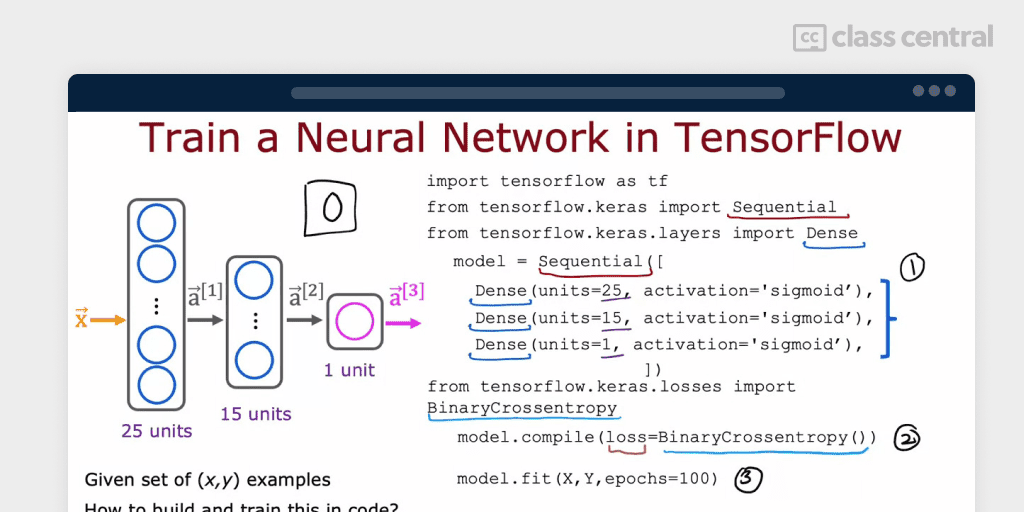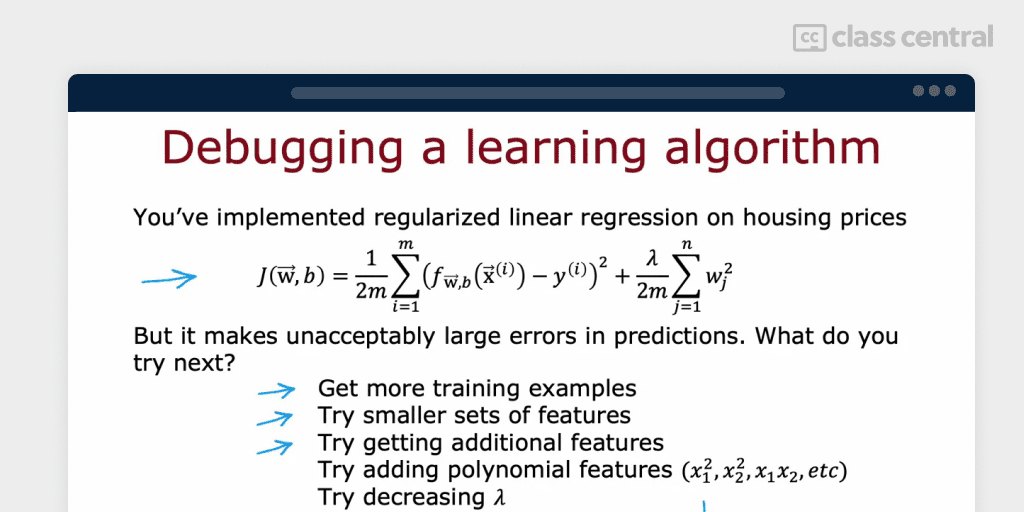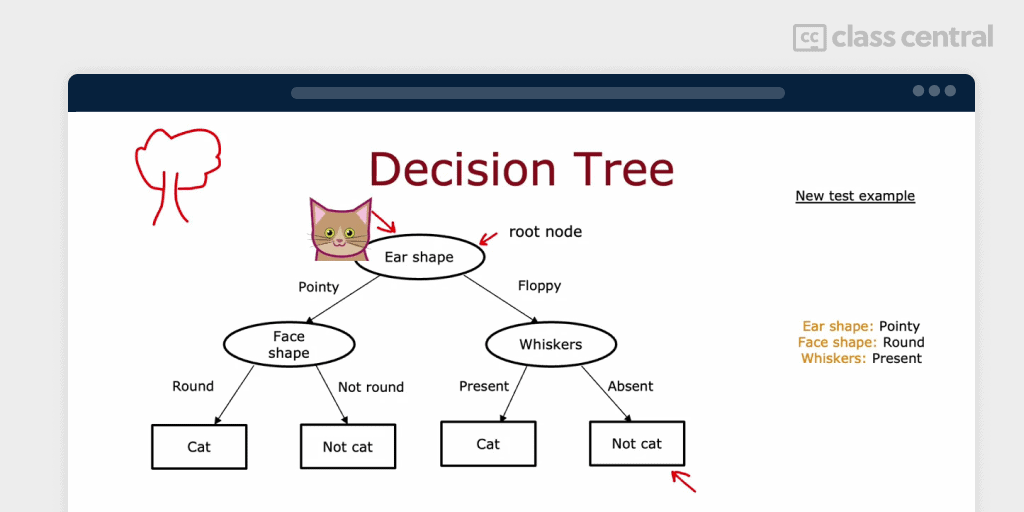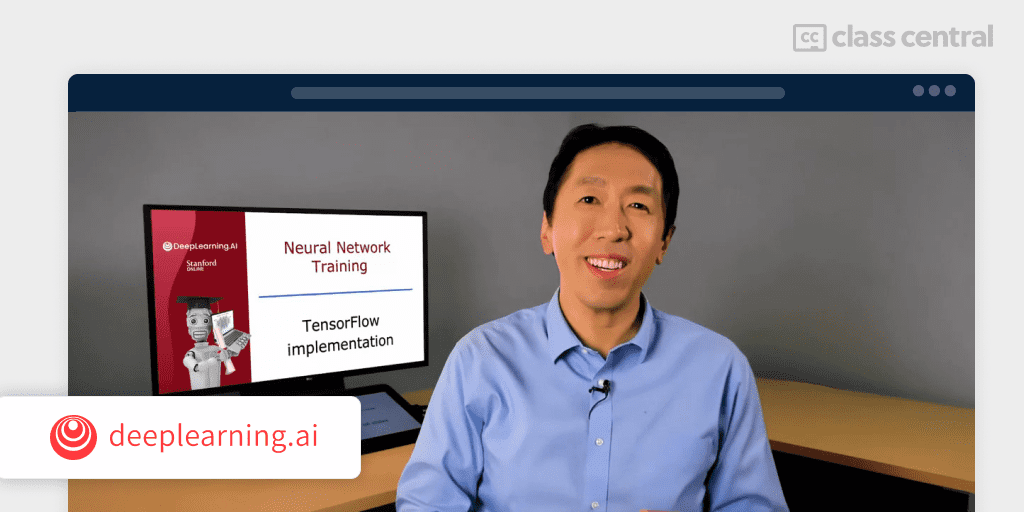Review: Advanced Learning Algorithms – Part 2 of Machine Learning Specialization
Second course of Prof. Andrew Ng’s Machine Learning Specialization, successor of the most popular MOOC of all time.
Introduction
In this continuation of the Machine Learning Specialization review, you’ll learn about neural networks (also called deep learning algorithms), and decision trees in the Advanced Learning Algorithms course by DeepLearning.AI.
If you want to learn more about the previous course in this series, you can check out my review of that course here.
In case you didn’t know, this course (and the entire specialization itself) is the spiritual successor of Andrew Ng’s 2011 Machine Learning course. It inspired many other university professors and instructors alike to create courses of their own, spawning a wave of revolution of free massive open online courses (MOOCs) across the entire educational industry. By the time it was sunsetted a decade later, it had accrued over 4.8 million learners, earning its spot as the most popular course of all time.
Andrew Ng, inspired by the success of his course, went on to co-found Coursera before launching other groundbreaking AI research projects like Google Brain which created TensorFlow and DeepLearning.AI which creates courses on artificial intelligence like the very one you’re looking at right now.
Without further delay, let’s get into the meat of the course.
Overview of the Syllabus
The aim of this course is three-fold:
- Build and train a neural network with TensorFlow to perform multi-class classification
- Apply best practices for machine learning development so that your models generalize to data and tasks in the real world
- Build and use decision trees and tree ensemble methods, including random forests and boosted trees

Neural networks are some of the most powerful and widely used machine learning algorithms. This is because neural networks act similarly to how brains learn. You’ll start the course by going over the structure of neural networks and how to carry out inference or prediction. You’ll then learn how to build neural networks with Tensorflow from scratch to develop mathematical intuition. There’s also an optional section on how neural networks can perform thousands of calculations efficiently using a method known as vectorization.
So you’ve built a neural network, but how do you train its parameters for yourself? The second week covers training as well as three different activation functions and a new loss function. You’ll find that these activation functions can be used to make multiclass and multi-label classifications, showing how versatile neural networks can become.

In the third week, the course shares practical advice for building, training, and evaluating machine learning systems that even highly paid engineers fail to apply consistently. Some of the tips include recognizing bias, variance, and skewed datasets, along with the development cycle of a machine learning project.
In the final week of this course, you’ll learn about a practical learning algorithm called the decision tree and see how to use them yourself. Ensembles of decision trees have many variations, and you’ll close the course with random forests and boosted trees (XGBoost).

Course Pedagogy
Andrew Ng is a fantastic teacher who can make something as abstract as neural networks easy to understand by illustrating the concepts with real-world examples. There are also the occasional in-video questions that quiz you on what you’ve just watched to make sure that you’re paying attention. Not only that, but every week comes with several quizzes to ensure that you’ve learned the material properly so that you are ready to start the best part of this course — the labs. Through practice labs, you’ll gain valuable experience implementing neural networks, applying practical advice from the course, and building machine learning systems.

And if you have any questions about the course or exercises, the course’s Discourse community consisting of both helpers and learners will be happy to help you out.
So should you take this course?
This course is great for those who either have taken the previous course in this series or already have some knowledge with Tensorflow programming but need a refresher (though you might need to brush up on your linear algebra and calculus to keep up with some of the more advanced material).
Sadly, free-to-audit learners do not have access to the practice quizzes or labs, so students should take detailed notes and find other materials and exercises to supplement their learning.
This course is part of the larger Machine Learning Specialization. The next course in this series is all about unsupervised learning, a logical progression from supervised learning.
I’ll be reviewing each course in the specialization before giving my verdict on the entire specialization itself. Stay tuned for my review of the next course!







